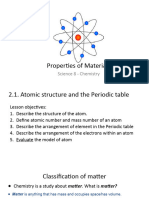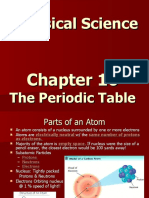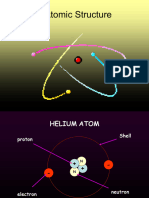0% found this document useful (0 votes)
15 views46 pagesAtomic Structure Basics
The document provides an overview of atomic structure, detailing the three sub-atomic particles: protons, neutrons, and electrons, along with their charges and relative masses. It explains concepts such as atomic number, mass number, and isotopes, using examples like sodium, carbon, and aluminium. Additionally, it describes the arrangement of electrons in shells and how to draw atomic models based on electronic configurations.
Uploaded by
yujy568Copyright
© © All Rights Reserved
We take content rights seriously. If you suspect this is your content, claim it here.
Available Formats
Download as PDF, TXT or read online on Scribd
0% found this document useful (0 votes)
15 views46 pagesAtomic Structure Basics
The document provides an overview of atomic structure, detailing the three sub-atomic particles: protons, neutrons, and electrons, along with their charges and relative masses. It explains concepts such as atomic number, mass number, and isotopes, using examples like sodium, carbon, and aluminium. Additionally, it describes the arrangement of electrons in shells and how to draw atomic models based on electronic configurations.
Uploaded by
yujy568Copyright
© © All Rights Reserved
We take content rights seriously. If you suspect this is your content, claim it here.
Available Formats
Download as PDF, TXT or read online on Scribd
/ 46


















































































